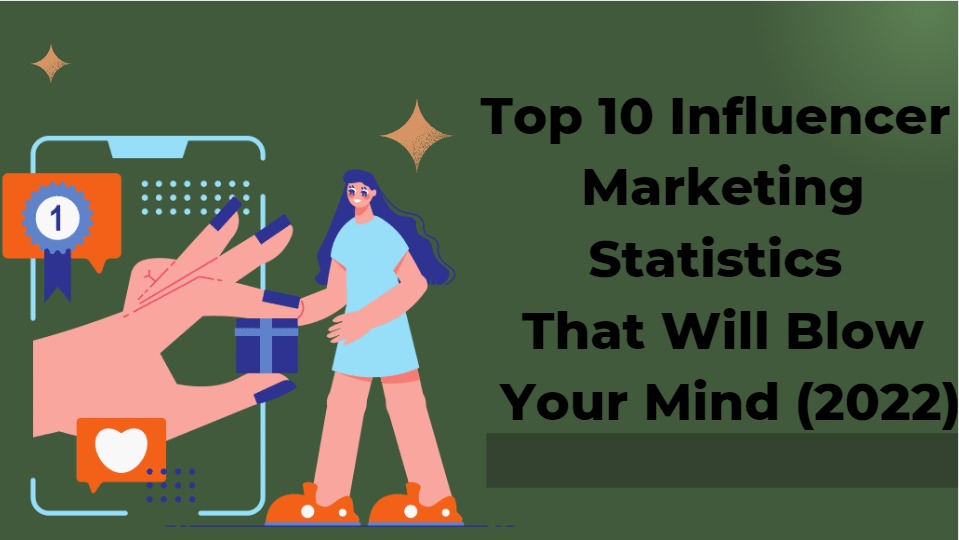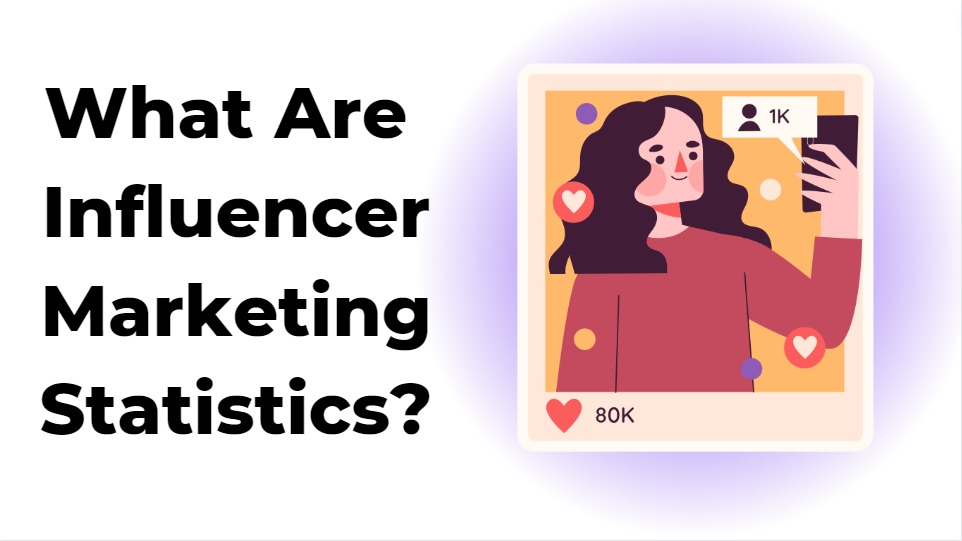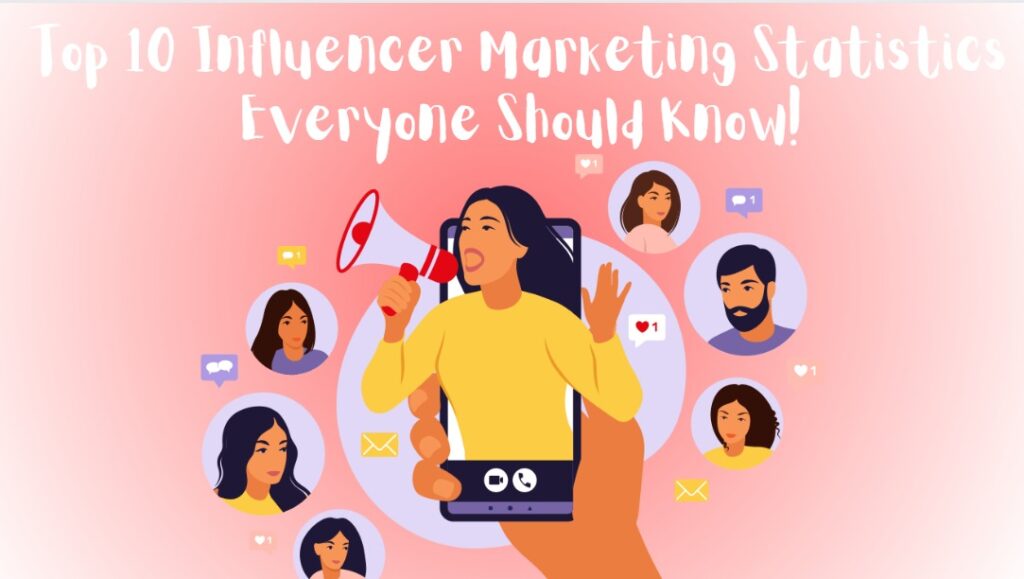
Ordinary people have had a greater ability to influence the content that is available online as the internet has grown. We are no longer dependent on huge media corporations for news and entertainment. We enjoy consuming material created by regular people just like us. The creative economy has grown into a powerful force throughout time. In the past, creating material required expensive cameras and other tools. Nowadays, you only need your smartphone, which most of us carry. However, keeping an eye on marketing statistics is a terrific method to stay relevant and stay on top of the most recent marketing trends. In this article, you will read about every detail to understand Influencer Marketing Statistics that might do wonders for you.
What Are Influencer Marketing Statistics?
Influencer marketing is a form of social media promotion that uses product recommendations from influencers or people with large social followings who are recognized as authorities in their fields.
The Ecommerce brands and platforms can offer giveaways. Also, they pay for sponsored endorsements or work together on a sizable creative project for every influencer’s public post. The data indicates that around 61% of consumers believe influencer recommendations and base their purchasing decisions on them. Consumers trust branded social media material published by businesses more than 38% of the time.
Your target market can offer the brand a great deal of boost and help improve brand awareness to see beneficial effects for the overall business. Understanding the target market and the audience is a critical step in a brand’s journey.

What Is The Objective Of Influencer Marketing Statistics?
Influencer marketing aims to create and distribute pertinent textual, downloadable, and visual content that will inform your target audience. About your company, area of expertise, and goods and services. Influencer marketing statistics help you plan and know how other influencers are generating leads and resolving the problems of their target audiences. Therefore, this will enable you to decide which strategies will be most effective for your company, clients, and leads. As more and more businesses use it, the influencer marketing trend has grown quickly, similar to so many other new technology or methods. Budgets are also rising as this method is being used more widely.
Top 10 Influencer Marketing Statistics Everyone Should Know!
1. The influencer marketing industry is expected to grow by 30% in 2022
Any skilled marketer knows that a 30% increase is a reliable sign that you are heading in the right direction. Something significant is happening when those double digits start to appear. This 30% increase in influencer marketing indicates that companies from all sectors are putting more time, effort, and money into working with influencers to produce appealing content they can post on social media. Also, you can only anticipate influencer marketing to expand in a positive feedback loop as influencer marketing expenses rise.
Social commerce refers to selling goods and services using social media networks. This form of purchasing is becoming increasingly common, indicating that many consumers rely on social media for purchase assistance. Before we know it, our favourite social media channels will be our favourite online purchasing destinations.
3. Brands profit $5.78 for every $1 spent on influencer marketing.
Influencer marketing has some of the strongest ROI in modern marketing, delivering nearly a 5x return compared to other marketing methods, such as traditional ad spending. As a side note, we cannot promise that any influencer marketing spend will always yield 5.78x. We’re talking about a mean here. Nonetheless, if you are patient enough to fine-tune your influencer marketing plan, you will witness an increased influencer marketing ROI that you will appreciate.
4.60% of marketers believe that influencer-generated content outperforms branded content.
If you’re wondering how effective these influencer marketing strategies are, there are lots of marketing specialists who will confirm them. Most of the experts polled in this influencer marketing benchmark analysis stated that their influencer-generated content outperformed branded content. Therefore, Promoting on channels other than your own is acceptable, and influencers are ideal candidates.
5. Micro-influencers convert at a 20% higher rate than macro-influencers.
Influencer marketing comes in different shapes and sizes, but the micro-influencer has taken hold of the business. Micro-influencers are among the internet’s most powerful creators. These individuals boast a highly engaged following that truly listens to what they have to say and often acts on it, with a 60% greater engagement rate than standard macro-influencers.
6. Influencer posts influenced 53% of women to make purchases.
When it comes to purchasing decisions, women rely largely on social media. They not only utilize social media platforms to learn more about the products or services they are interested in, but they also take it a step further by following an influencer in that sector or niche in the hopes that they can provide an even greater perspective on the product.
7. 79% of brands that used influencer marketing did it through Instagram.
There’s no arguing that Instagram remains one of the most powerful social media channels, and as such, brands are continuing to drive influencer marketing through that channel. Instead of focusing on developing content for their native channels, marketers are now looking to influencers for content to integrate the two audiences by allowing the creator to display their product on the influencer’s channel.
8. TikTok is preferred by 30% of Gen Z buyers for product research.
When it comes to Gen Z, they definitely prefer using TikTok to learn more about a product or service that they are interested in. They want to know what other people think about cosmetic goods, clothes, cuisine, and even software before they buy.
9. 8% of people are more likely to trust brands that embrace diversity in their marketing.
When it comes to diversity and inclusiveness, every brand has an opportunity for development. Consumers are searching for brands that promote diversity and foster inclusivity in their influencer marketing efforts across the board as culture continues to urge understanding and acceptance of all people. This includes collaborating with social media influencers from various origins, ethnicities, genders, and social classes to create appropriate content for all audiences.
10. Every day, smartphones serve as the first point of contact for more than half of consumers aged 18 to 24.
57% of young people aged 18 to 24 spend significant time on social media. They obtain various kinds of infotainment from social media platforms, from news to informational articles. This figure shifts upward as we become older. The percentage of adults aged 35 who use social media platforms for information reasons falls to 29%.

Conclusion
Above, I have provided all of the information required for you to grasp the influencer marketing statistics better. In this age of technology-driven innovation, everyone comes across some social media and interacts with its user interface. Therefore, it would be great if everyone understood the subject. If it isn’t clear from these influencer marketing statistics, influencer marketing is on the rise and can help your business reach great heights.

